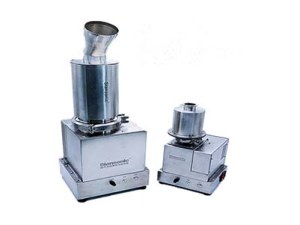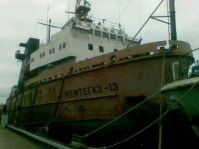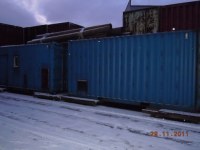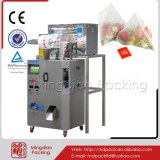NX series nano aerosol generator is an ultra-fine atomization device specially used for ultrasonic atomization disinfection. Using high-frequency ultrasonic transducer and unique flow channels, it can produce very small atomized droplets with mean diameter of 0.5 microns. Because such tiny droplets will volatilize rapidly when contacting the surface of the object, they will not cause aggregation and condensation, it is also called "dry mist". Since dry mist droplets in submicron scale will not wet the surface of the object, precision instruments and equipment will not be damaged during ultrasonic atomization disinfection process. At the same time, the aerosol formed by submicron atomized droplets has better performance on suspension and dispersion, and can fill a specific space faster. Therefore, it is especially suitable for the room environment disinfection and sterilization without dead corners. One unit of NX8000 ultrasonic aerosol generator can fill a cubic meter of space in less than 60 seconds. Using the dry mist disinfection equipment composed of 4 units of NX8000, a room with 20 square meters can be filled with submicron aerosol in around 30 minutes. Combined with common disinfectants such as hydrogen peroxide (H2O2) and hypochlorous acid (HCIO), it can disinfect the indoor air and surface efficiently and quickly. At present, this ultrasonic dry mist technology has been used for space disinfection in hospitals, laboratories, pharmaceutical enterprises and other environments.
As one of the leading ultrasonic piezo transducer suppliers in China, our NX series nano aerosol generator includes a liquid feeding system that can automatically refill the liquid, high corrosion-resistant ultrasonic atomizing transducers which can atomize various disinfectants for a long time, such as hydrogen peroxide, hypochlorous acid, chlorine dioxide, peracetic acid and so on.
Features
Applications
Ultrasonic Atomization Disinfection Features
Atomized droplets in sub-micron scale, mean diameter is around 0.5 micron.
Dry mist with excellence suspension and dispersion, filling the room rapidly.
High corrosion resistance: compatible with various disinfectants, such as hydrogen peroxide, peracetic acid, hypochlorous acid, chlorine dioxide, etc.
Built in sensor and liquid pump to automatically refill disinfectant.
It can be used alone or in combination to develop various disinfection and ultrasonic nebulizer transducer.
How does ultrasonic atomization compare to other disinfection methods in terms of effectiveness and efficiency?
Ultrasonic atomization offers several advantages over traditional disinfection methods. In terms of effectiveness, the small droplet size generated by ultrasonic atomizers allows for greater coverage and improved into surfaces, achieving more thorough disinfection. The fine mist can reach areas that may be challenging to access with other methods, such as electrostatic spraying or manual wiping.
Furthermore, the uniform distribution of droplets ensures consistent application of the disinfectant solution, minimizing the risk of missed spots or uneven coverage. Ultrasonic atomization also reduces the reliance on human labor, making it more efficient for disinfecting larger areas or complex environments. The automated process can save time and labor costs, enhancing overall efficiency.
Ultrasonic Atomization Disinfection Applications
Air disinfection
Surface disinfection
Food disinfection
How does ultrasonic atomization disinfection work?
Ultrasonic atomization disinfection works by utilizing high-frequency sound waves to create a fine mist or fog of disinfectant solution. This mist is generated by an ultrasonic atomizer, which converts the liquid disinfectant into tiny droplets through the rapid vibration of a piezoelectric element. The generated mist consists of extremely small droplets, typically in the range of 1-10 microns in diameter. These droplets are then dispersed into the air or directed onto surfaces, providing comprehensive coverage.
When the disinfectant mist comes into contact with bacteria, viruses, or other pathogens, it disrupts their cellular structures and functions, leading to their inactivation or destruction. The small droplet size enables the mist to reach even hard-to-reach areas and penetrate porous materials, ensuring thorough disinfection. Ultrasonic atomization disinfection is commonly used in various settings, including healthcare facilities, laboratories, offices, and public spaces.
Can ultrasonic atomization be used for disinfecting water or other liquids?
Yes, ultrasonic atomization can be utilized for disinfecting water or other liquids. The same principles of ultrasonic atomization apply to disinfecting liquids. By converting the liquid disinfectant into a fine mist, ultrasonic atomization enables the disinfectant to be evenly dispersed throughout the liquid, ensuring thorough and uniform disinfection.
This method is commonly employed in water treatment processes, where ultrasonic atomization can help distribute disinfectants, such as chlorine or ozone, throughout the water supply. It allows for effective disinfection of the water by ensuring that the disinfectant is evenly mixed and in contact with any potentially harmful microorganisms present.
Additionally, ultrasonic atomization can be used for disinfecting other liquids, such as cleaning solutions, sanitizers, or chemical agents used in various industrial processes. The fine mist produced by ultrasonic atomizers ensures efficient and comprehensive coverage, enhancing the disinfection efficacy of the liquid.
Location : No.1, Xingguang 5th Street, Opto-Mechatronics Industrial Base, Tongzhou Park,Zhongguan Village Technology Park 101111, Beijing, China, 101111 Tongzhou,
Contact : sonic Sian, +86 1081502288







